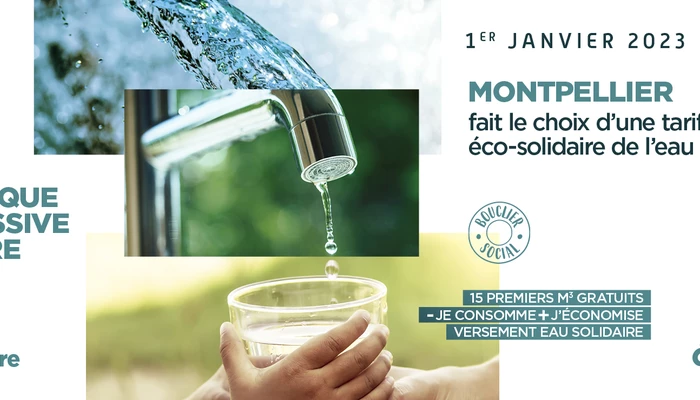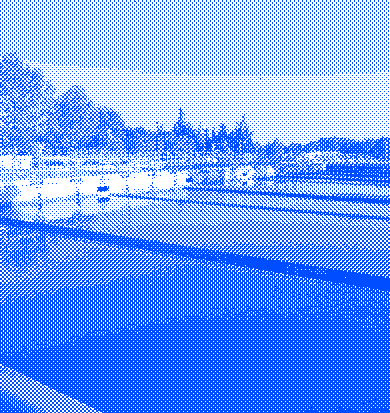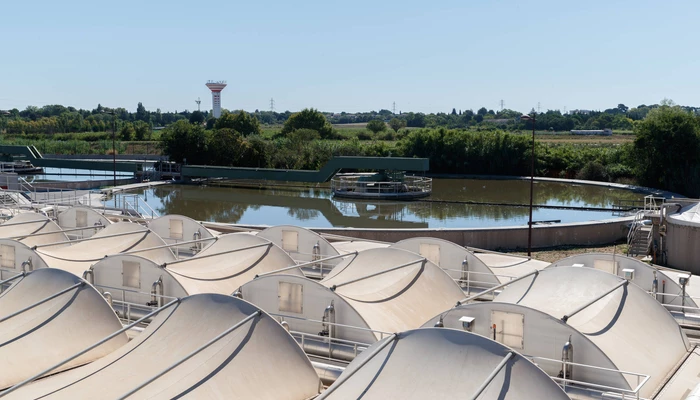3 essential missions to serve residents
- Sanitary:fight against water-borne epidemics, by collecting and purifying dirty water from homes and factories.
- Environmental:protect rivers, ponds and the sea from various forms of wastewater pollution, by treating it as thoroughly as possible before discharging it into the natural environment.
- Social:participate in the sustainable development of our societies, by making wastewater a resource and no longer a waste.
Sanitation concerns all wastewater evacuation and treatment techniques, from collection via networks to treatment in wastewater treatment plants.
The aim? To sanitize this dirty water, i.e., to make it healthy and clean before discharging it into the natural environment, free of all pollution.
Montpellier Méditerranée Métropole exercises this competence in all 31 communes of the metropolitan territory: it has chosen to commit to public management of water and to extend, after drinking water, its governance to sanitation on January 1, 2023.
5 objectives to turn wastewater into a resource
While the Metropole of Montpellier is responsible for organizing the public sanitation service on its territory, it is each citizen who, through his or her water bill, finances a large part of the implementation of this public policy.
Gathered in a specific budget, the funds ensure the operation of the service as well as investments.
Collecting: 2 sanitation systems, collective or non-collective
The collection of domestic (sinks, washbasins, showers, toilets) and industrial (if compatible) wastewater is ensured in two ways: either via a collective sanitation system, where each building (houses, apartment buildings, factories) is connected to a common collection network that carries the wastewater to a treatment plant, responsible for depolluting it before discharging it into the natural environment; or via a non-collective sanitation system, where the wastewater is centralized, and treated, on the plot, thanks to a filtering soil and sufficient space. In the Montpellier metropolitan area, only 4% of households are not connected to a collective wastewater treatment system, due to their location.
2 types of collection network, separate or combined:
- Collecting wastewater, and transporting it to treatment plants, is the first stage of the public collective wastewater treatment service. This is done via a substantial network of connections and pipes. Over 92% of this network is made up of a separative network, enabling wastewater to be separated from rainwater, which does not need to pass through treatment plants.
- A little over 7% of the network, mainly in the center of Montpellier, evacuates combined wastewater and rainwater.
Each year, 0.7% of the network is renewed to ensure continuous improvement of the service.
Treatment: each plant has its own treatment method
Activated sludge, reed beds, biofilters, filter gardens... different treatment methods are used on our territory, to achieve the same performance objective, consistent with our needs, using ever more innovative processes to adapt to the pollutants to be eliminated. The aim is also to reduce the residues of this treatment, notably sludge, and to recover them through, for example, composting and agricultural spreading.
Reject: 13 treatment plants serving our territory
13 treatment plants provide the Montpellier Metropole's public wastewater service: 6 communal plants, 6 intercommunal plants and Maera, the hub plant that collects and treats wastewater from 14 communes in the Metropole and 5 communes outside the Metropole.
Maera is connected to a 20 km-long sea outfall (11 km of which is at sea), which allows treated water to be discharged far out to sea. The operation of all networks and plants is subject to strict control, and environmental monitoring procedures are constantly being strengthened and adapted, in order to guarantee both the health safety of residents and the preservation of natural areas.
Monitoring: cutting-edge expertise, varied, fast-changing professions
The management of public wastewater services is also, and above all, the mobilization of men and women, devoted to a noble cause - the health of all - but whose mission is little-known. Maintaining the network, intervening in the event of blockages or breakdowns, ensuring the operation of treatment plants, collecting environmental monitoring data, guaranteeing relations with users, conducting research programs on new treatment methods: these are all professions and areas of expertise at the cutting edge of today's challenges of ecological and economic resilience of territories.
Recycling: wastewater treatment is a constant source of phosphorus
The management of wastewater treatment facilities requires constant adaptation and evolution. Improving facilities to keep rainwater discharges, nuisances and the ecological footprint to a minimum; optimizing network operation to improve service; choosing the best management method, public or private; acting upstream to better understand and treat new sources of pollution such as endocrine disruptors or micro-pollutants; innovating by developing R&D programs... So many challenges for the Metropole de Montpellier.
Where does the region's wastewater go?
3 possibilities:
- Communal stations
- Intercommunal stations
- Maera station

Key figures
A PE (population equivalent) represents the pollution load produced by one person and is used to evaluate the capacity of a treatment plant.
Who to contact
Affiliation to a sanitation network
Everyone involved in preserving the environment
In the smallest gestures of your daily life, you can, and must, act to contribute to the preservation of rivers, ponds and the sea. Because while treatment plants are there to clean up wastewater, everyone can, upstream, alleviate pollution and reduce risks. By avoiding collecting everything, it's easier to treat.
- Don't throw hazardous products or medicines down your sink: even when treated, these highly toxic chemical substances contribute to unbalancing aquatic environments and spreading endocrine disruptors. Take your medicines back to your pharmacist and your chemicals to a suitable center.
- Cotton swabs or wipes flushed down the toilet tend to clog drains and thus prevent the proper evacuation of wastewater to treatment plants, even causing sewage to back up in users and overflows leading to localized pollution.
- In the street, it's the stormwater drainage system that's concerned, not the sewage system, but the risk is there and so vigilance is essential: masks, cigarette butts, plastics, paper thrown into the street, all this waste ends up in waterways, on riverbanks and, ultimately, in the sea.
In practice




